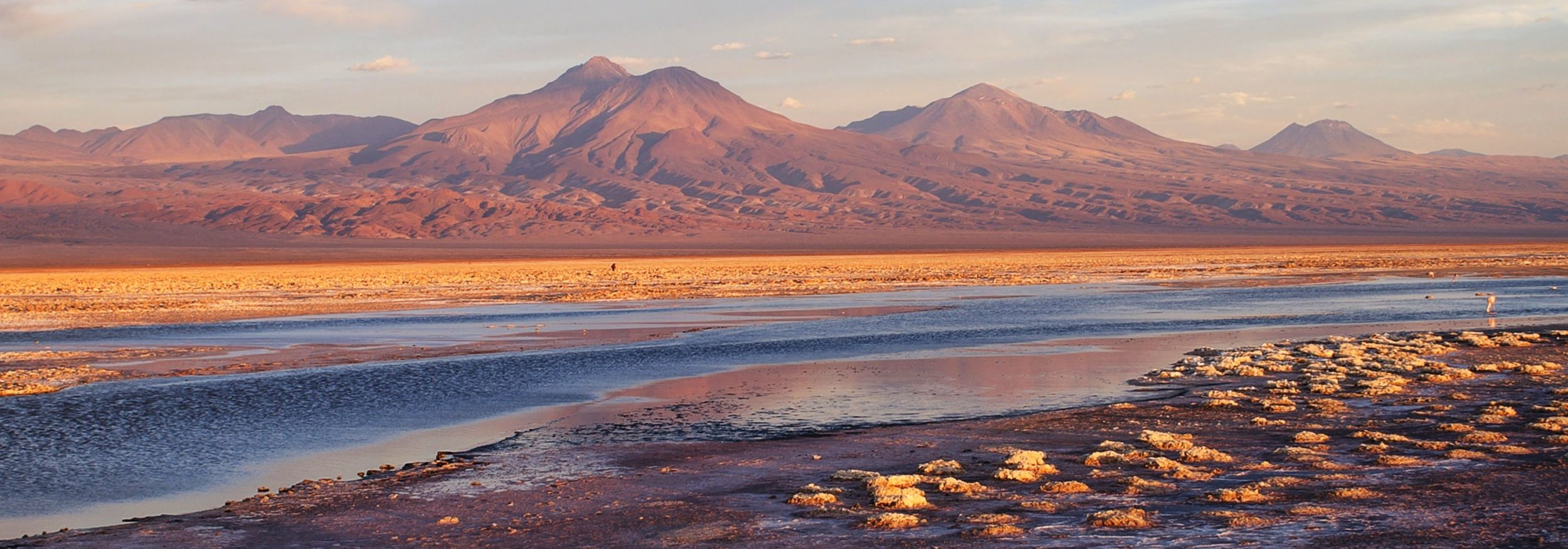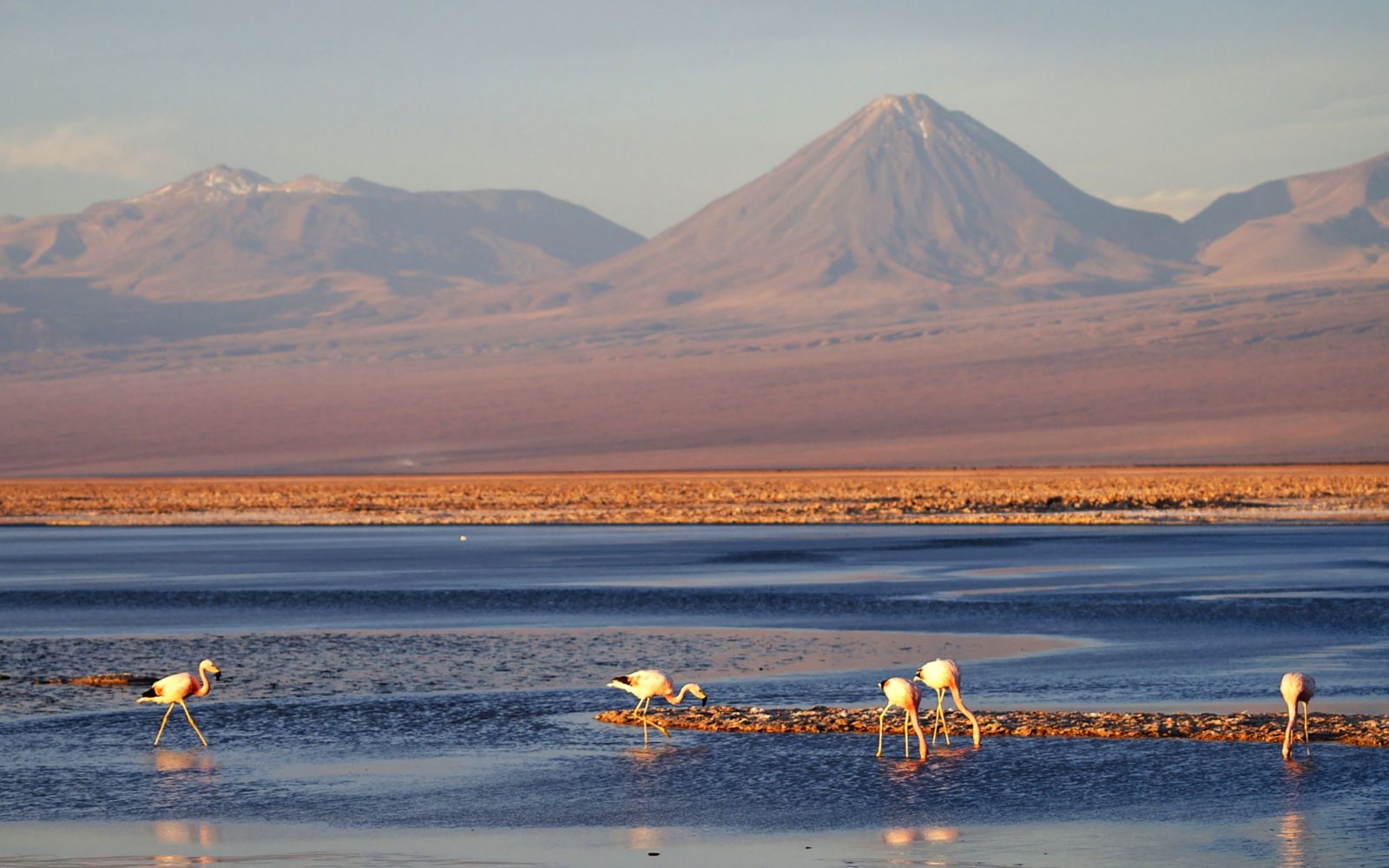

The Laguna Chaxa represents one of several open water surfaces in the eastern part of the core area of the Salar de Atacama. Like some other lagoons nearby, it is superficially fed with water by the Canal Burro Muerto, which originates between the deltas of the Río San Pedro and the Río Villama, and runs through the eastern part of the salar from north to south. As the Laguna Chaxa - in contrast to the Laguna Tebinquinche and most other lagoons in the salar - is detachd from groundwater supply, its water level strongly relies on the discharge of the channel. Depending on the water level, also the number of individual lagons varies: in fact, the Laguna Chaxa consists of an entire system of water surfaces. Despite its high salt content, this lagoon hosts an ecosystem with a population of flamingos atop.

The flamingos in the Salar de Atacama


Approach the flamingos in the Laguna Chaxa by clicking on the arrows or into the photograph.
Three species of flamingos live in the Salar de Atacama. They feed on the ecosystems of water bodies such as the Laguna Chaxa, whereas they breed and raise their offspring in the adjacent areas.
But on which organisms do the flamings actually feed? And what is the structure of the ecosystems in the lagoons in general? Try to formulate some hypotheses related to these research questions!












